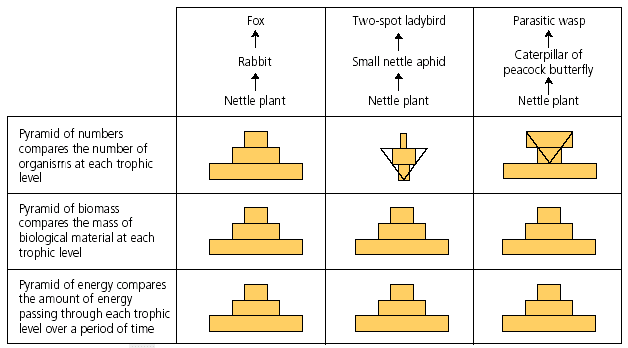ECOLOGY
Introduction to Ecology
Weather - The climate for a given date
Climate change - A change in climate for a particular region over a large period of time (>30 years)
Climate variability - A variation in natural climate
Ice melts
More water in oceans
Flash floods
Less salt
Water cannot retain heat
Problems in marine life
Biotic - living
Abiotic - Non-living
Ecosystem - An environment/space where biotic and abiotic factors interact.
Ecology - Study of biotic factors and their relationship/interaction with abiotic factors.
Species - Group of organisms which are capable of interbreeding and producing fertile offspring.
Population - A group of organisms of the same species in the same area at the same time.
Community - Different populations in the same habitat, interacting together.
Habitat - Environment in which a species normally lives.
Biosphere - Multiple ecosystems interacting with each other.
- Atmosphere (Air)
- Lithosphere (Land)
- Hydrosphere (Water)
Cells Tissues Organs Organ Systems Organism
Species Population Community Ecosystem Biosphere
Autotrophs - Capable of making their own organic molecules from inorganic molecules as a food source.
Heterotrophs - Cannot make their own food and must obtain organic molecules from other organisms.


Herbivores - An animal that gets its energy from eating plants and only plants.
Omnivores - An animal that gets its energy from eating both plants and other animals.
Carnivores - An animal that gets its energy from eating only other animals.
Food Chains - A linear network of links in a food web starting from producer organisms and ending at apex predator species, detritivores, or decomposer species.
Food Webs - A system of interlocking and interdependent food chains.
Consumers - Ingest organic matter which is living or has recently died, in order to live. The three types of consumers are herbivores, omnivores, and carnivores.
Trophic levels - Energy levels
Decomposers - Consume dead material, recycles nutrients back to the environment.
Saprotrophs - Secrete digestive enzymes in surroundings and absorb nutrients (e.g. fungus)
Detrivores - First consumes food, then digests it inside bosy (e.g. insects)
Detritus - Dead organic material
Photoautotrophy - Derive energy through photosynthesis.
Chemoautotrophy - Derive energy stored in chemical bonds.
Chemical energy in carbon compounds flow through food chains by means of feeding.
* Carbon is cyclic
* Energy is non-cyclic, comes from the sun.
Transfer of energy from one trophic level to the next.
10%
Only 10% of energy is transferred from one trophic level to the next because the other 90% of energy is used up by the organism being eaten. Also note that animals do not completely eat the entire animal, some parts of animal are uneaten.
FACTORS CONTROLLING AN ECOSYSTEM
1. Nutrients (closed system)
2. Energy (open system)
3. Interaction between species
Abiotic Factors:
-
Water
-
Temperature
-
pH level
-
Land
-
Wind

Biogeochemical cycles - Cycles of matter between the abiotic and biotic components of the environment.
- Carbon
- Nitrogen Essential to life on earth
- Phosphorous
All food comes from producers.
Light + Water + CO2 --> Glucose via photosynthesis
*Some CO2 will directly dissolve in water
*Most CO2 will combine with H2O to make H2CO3


Chloroplast & a brief intro to Photosynthesis
Photosyntheis
Light
Synthesizing using light
*Generate oxygen
*Energy enters food chain
Chlorophyll - A green pigment found in chloroplast, essential to photosynthesis (absorbs all light waves except green - hence the color green).
Metabolism
- Catabolism: Rate of breaking down material
- Anabolism: Rate of utilizing broken down material
Photolysis - Breaking down water using light
Light independent reactions take place at the stomata
Light dependent reactions take place at the thylakoid membrane and stacks.
CO2 diffuses through plant leaves. Leaves contain opening called 'stomata'
- Chloroplast present in leaves (place of cellular respiration)
- Air is allowed to diffuse through the stomata
Enzymes - Biological catalysts (protein in nature) which can speed up the rate of reaction without being used up in the reaction itself.
Figure 1 Chloroplast

Figure 2. Equation of photosynthesis
